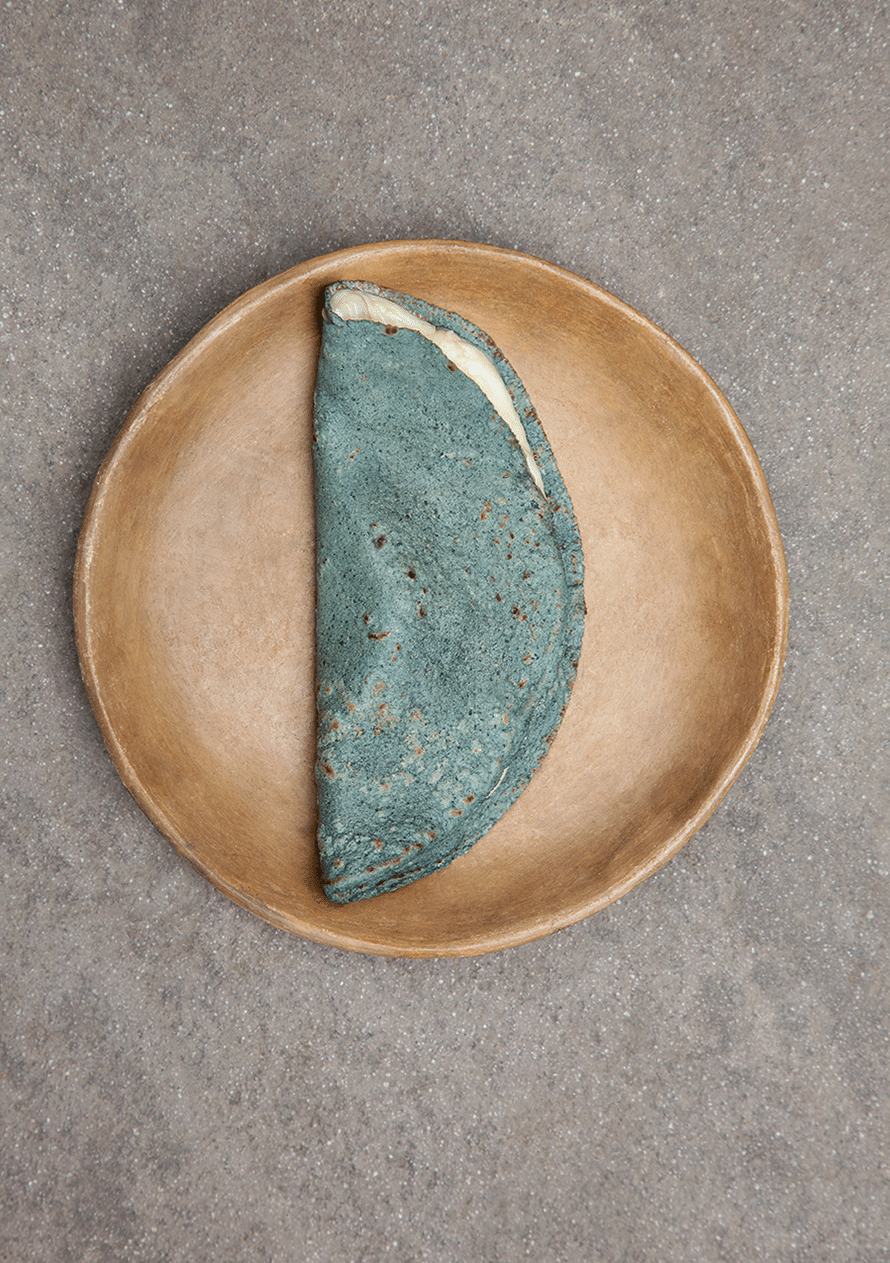This mestizo antojito consists of a tortilla —made of maize dough or wheat flour— folded in half in the shape of a half-moon, filled with melted cheese or any type of stew.
In some regions of the country, especially in the north, south and southeast, quesadillas are filled exclusively with cheese, while in Mexico City the ones made on a hotplate prepared with countless fillings are famous, including mincemeat, potatoes, sliced chili peppers, mushrooms, shredded chicken, maize smut or pumpkin flower, with or without cheese. They can be served alone or open to add sliced lettuce, chopped onion, grated cheese, cream and chili sauce. In other places, such as Pátzcuaro, Michoacán, shrimp quesadillas are prepared fried, accompanied with pickled chilies.
This difference in their fillings has caused a controversy regarding their name. According to the Diccionario enciclopédico de la gastronomía mexicana, they are named after their main and original filling, which is cheese, but popular custom accepts as quesadillas the latter even if they are prepared without this ingredient.

Son of a camp follower and an Irishman who took part in the Revolution, Antonio Rodolfo Quinn Oaxaca (1915–2001) was born in Chihuahua, next to the millstone behind a kitchen. It was a time of rifles and war cries when his mother felt the first labor pains while grinding maize.
From an early age he migrated to the United States and began working at age five. He sold newspapers, he polished shoes, he was a construction worker, boxer and even a preacher. Becoming an actor, known simply as Anthony Quinn, was not among his plans. He discovered his vocation while studying architecture.
At 19 years old, he appeared in the office of architect Frank Lloyd Wright, who had granted him a scholarship and noticed that the young man had a frenulum on his tongue, so he sent him to a doctor who corrected the problem. The rehabilitation included vocal coaching taught at a drama school. This is how he went from playing characters in school plays to being an extra in films and then becoming one of the most prominent actors of his generation.
He took part in more than 150 films filmed in Hollywood, Italy, France, United Kingdom, Mexico, South Africa, Spain, Canada, Germany and Brazil. He won his first Academy Award in 1952, as Best Supporting Actor in film Viva Zapata! and in 1956, for his performance in Lust for Life.


Patricia Quintana (Mexico City, 1946–2018), chef, researcher, writer and businesswoman, was one of the most important promoters of Mexican cuisine in the country and abroad, who devoted her life to acknowledging and revaluing the native cuisine of different regions of Mexico.
From the kitchen of her restaurant Izote, she created a style that gave a different dimension to authentic mexican cuisine, presenting “traditional recipes and ingredients in a sophisticated way, giving them the recognition and honor they deserve”.
Her legacy includes the creation of the Escuela de Alta Cocina, where she trained chefs and taught for over forty years, and the publication of more than 25 books on gastronomy —several of them translated into English and German—, including La cocina es juego (1975); Puebla, la cocina de los ángeles (1992), and Cuisine of the Water Gods (1994).
In 1985 she was one of the founding members of the Círculo Mexicano de Arte Culinario, a group that helped value the essential role of women in national gastronomy, together with cooking advocates Martha Chapa, Margarita Carrillo, Alicia de Angeli, Guadalupe Pérez San Vicente, María Dolores Torres, María Orsini, Lula Bertrán, Karla Hentschel, Lila Lomelí, Ana María Vásquez Colmenares, Susana Palazuelos and Patricia Celis, among others.
The awards she garnered in a career spanning half a century include being appointed Culinary Ambassador of Mexico by the Ministry of Tourism and the Association of Restaurants of Mexico, and the Gold Laurel Quality Award by the Asociación México-España.

